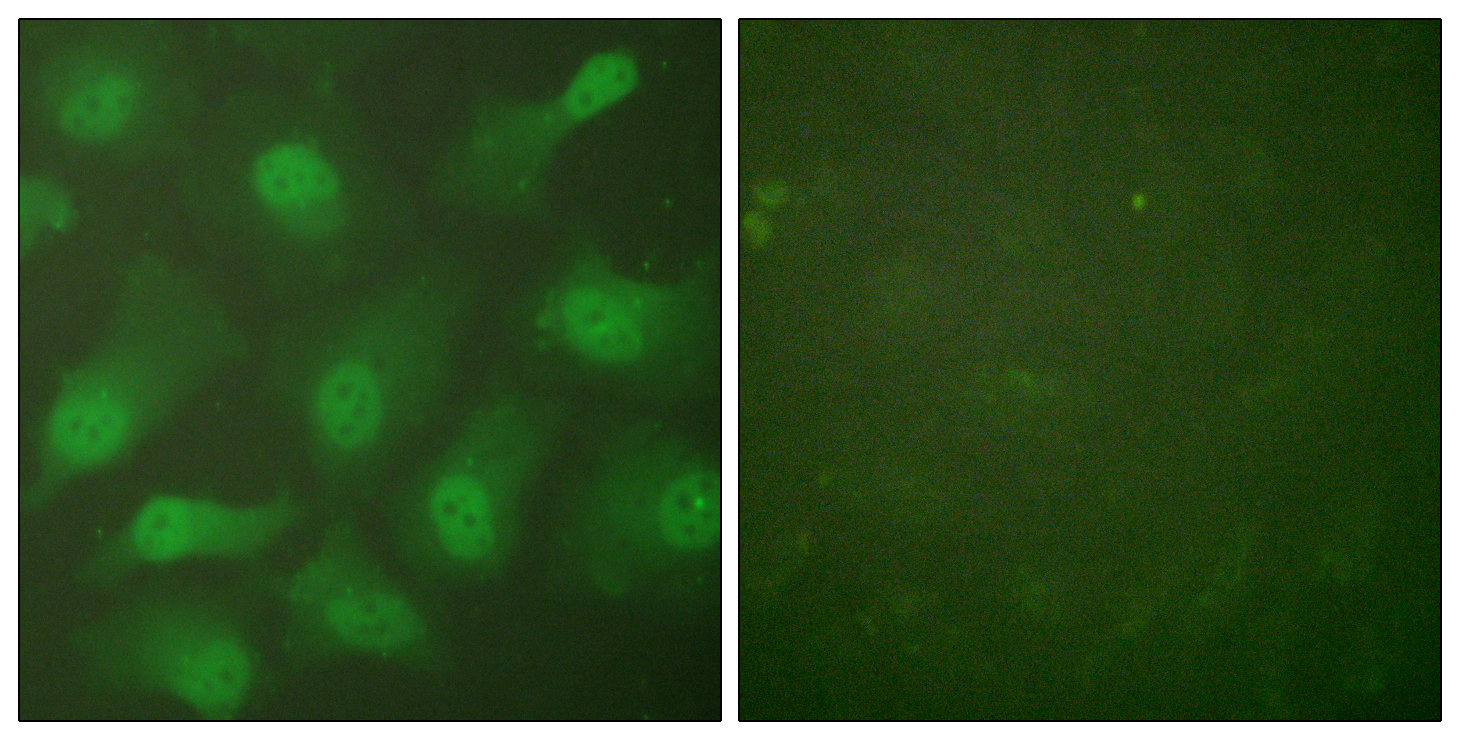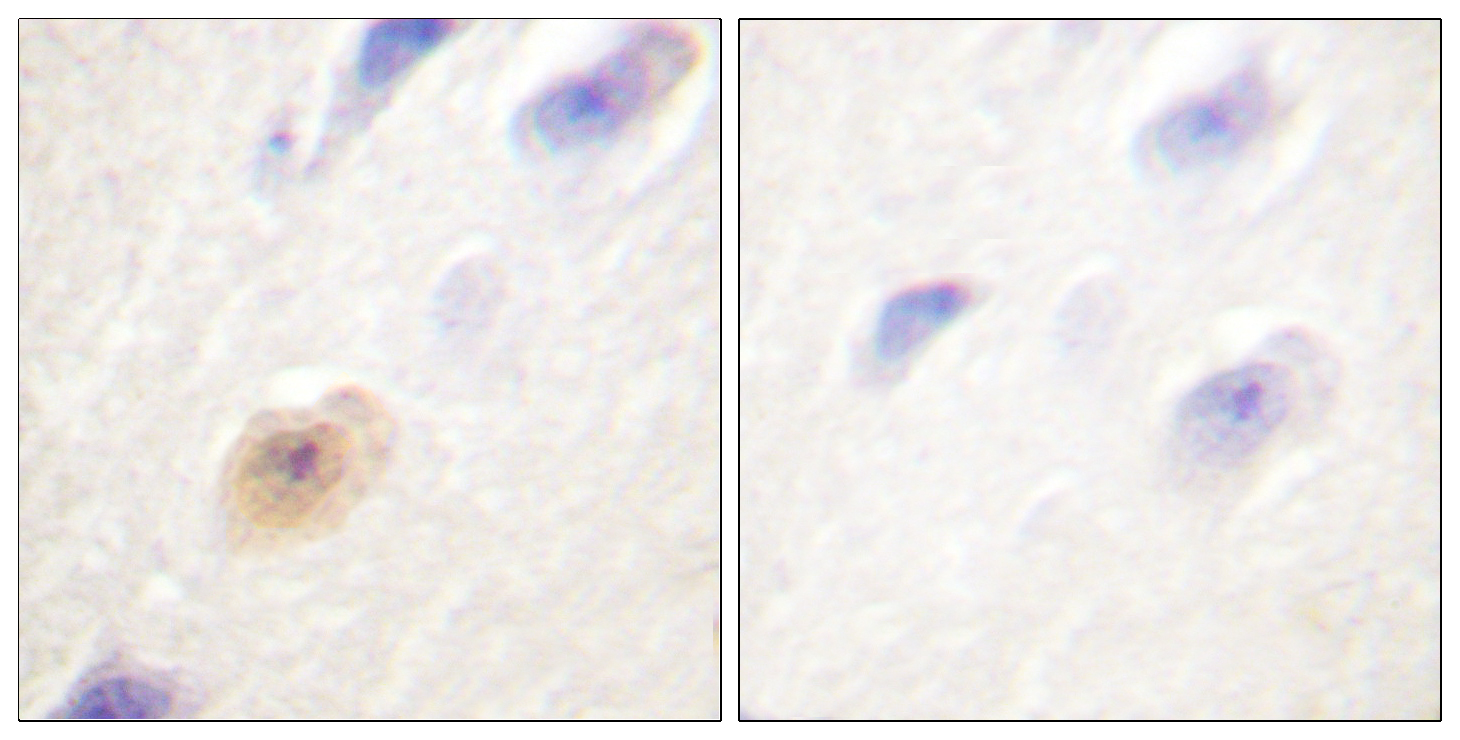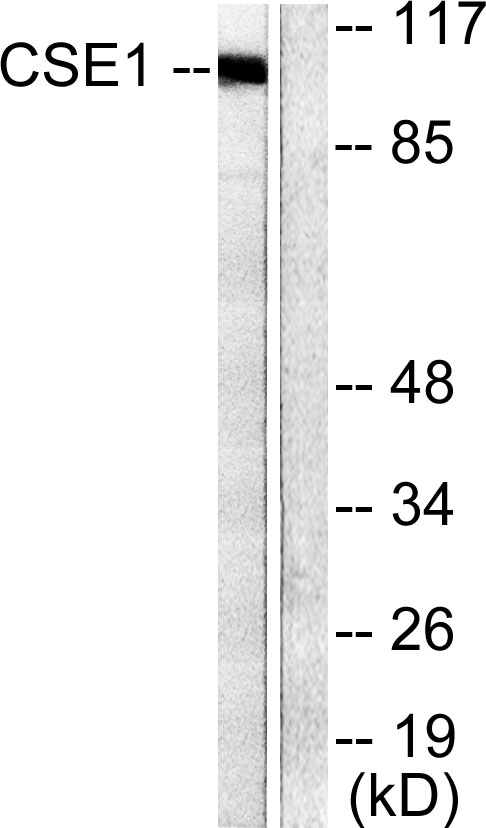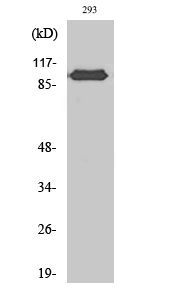产品名称
CAS Rabbit Polyclonal Antibody
别名
CSE1L; CAS; XPO2; Exportin-2; Exp2; Cellular apoptosis susceptibility protein; Chromosome segregation 1-like protein; Importin-alpha re-exporter
存储缓冲液
Liquid in PBS containing 50% glycerol, 0.5% BSA and 0.02% New type preservative N.
Human Gene Link
http://www.ncbi.nlm.nih.gov/sites/entrez?db=gene&term=1434
Human Swissprot No.
P55060
Human Swissprot Link
http://www.uniprot.org/uniprotkb/P55060/entry
Mouse Swissprot No.
Q9ERK4
Mouse Swissprot Link
http://www.uniprot.org/uniprot/Q9ERK4
免疫原
The antiserum was produced against synthesized peptide derived from human CSE1L. AA range:1-50
特异性
CAS Polyclonal Antibody detects endogenous levels of CAS protein.
稀释度
WB 1:500 - 1:2000. IHC 1:100 - 1:300. Immunoprecipitation: 2-5 ug:mg lysate. IF 1:200 - 1:1000. ELISA: 1:40000. Not yet tested in other applications.
宿主
Polyclonal, Rabbit,IgG
背景介绍
Proteins that carry a nuclear localization signal (NLS) are transported into the nucleus by the importin-alpha/beta heterodimer. Importin-alpha binds the NLS, while importin-beta mediates translocation through the nuclear pore complex. After translocation, RanGTP binds importin-beta and displaces importin-alpha. Importin-alpha must then be returned to the cytoplasm, leaving the NLS protein behind. The protein encoded by this gene binds strongly to NLS-free importin-alpha, and this binding is released in the cytoplasm by the combined action of RANBP1 and RANGAP1. In addition, the encoded protein may play a role both in apoptosis and in cell proliferation. Alternatively spliced transcript variants have been found for this gene. [provided by RefSeq, Jan 2012],
组织表达
Detected in brain, placenta, ovary, testis and trachea (at protein level) (PubMed:10331944). Widely expressed (PubMed:10331944). Highly expressed in testis and in proliferating cells (PubMed:7479798,PubMed:10331944).
细胞定位
Cytoplasm . Nucleus . Shuttles between the nucleus and the cytoplasm. .
功能
function:Export receptor for importin-alpha. Mediates importin-alpha re-export from the nucleus to the cytoplasm after import substrates (cargos) have been released into the nucleoplasm. In the nucleus binds cooperatively to importin-alpha and to the GTPase Ran in its active GTP-bound form. Docking of this trimeric complex to the nuclear pore complex (NPC) is mediated through binding to nucleoporins. Upon transit of a nuclear export complex into the cytoplasm, disassembling of the complex and hydrolysis of Ran-GTP to Ran-GDP (induced by RANBP1 and RANGAP1, respectively) cause release of the importin-alpha from the export receptor. CSE1L/XPO2 then return to the nuclear compartment and mediate another round of transport. The directionality of nuclear export is thought to be conferred by an asymmetric distribution of the GTP- and GDP-bound forms of Ran between the cytoplasm and nucleus.,similarity:Belongs to the XPO2/CSE1 family.,similarity:Contains 1 importin N-terminal domain.,subcellular location:Shuttles between the nucleus and the cytoplasm.,subunit:Found in a complex with CSE1L/XPO2, Ran and KPNA2. Binds with high affinity to importin-alpha only in the presence of RanGTP. The complex is dissociated by the combined action of RanBP1 and RanGAP1.,tissue specificity:Highly expressed in proliferating cells.,
纯化
The antibody was affinity-purified from rabbit antiserum by affinity-chromatography using epitope-specific immunogen.




